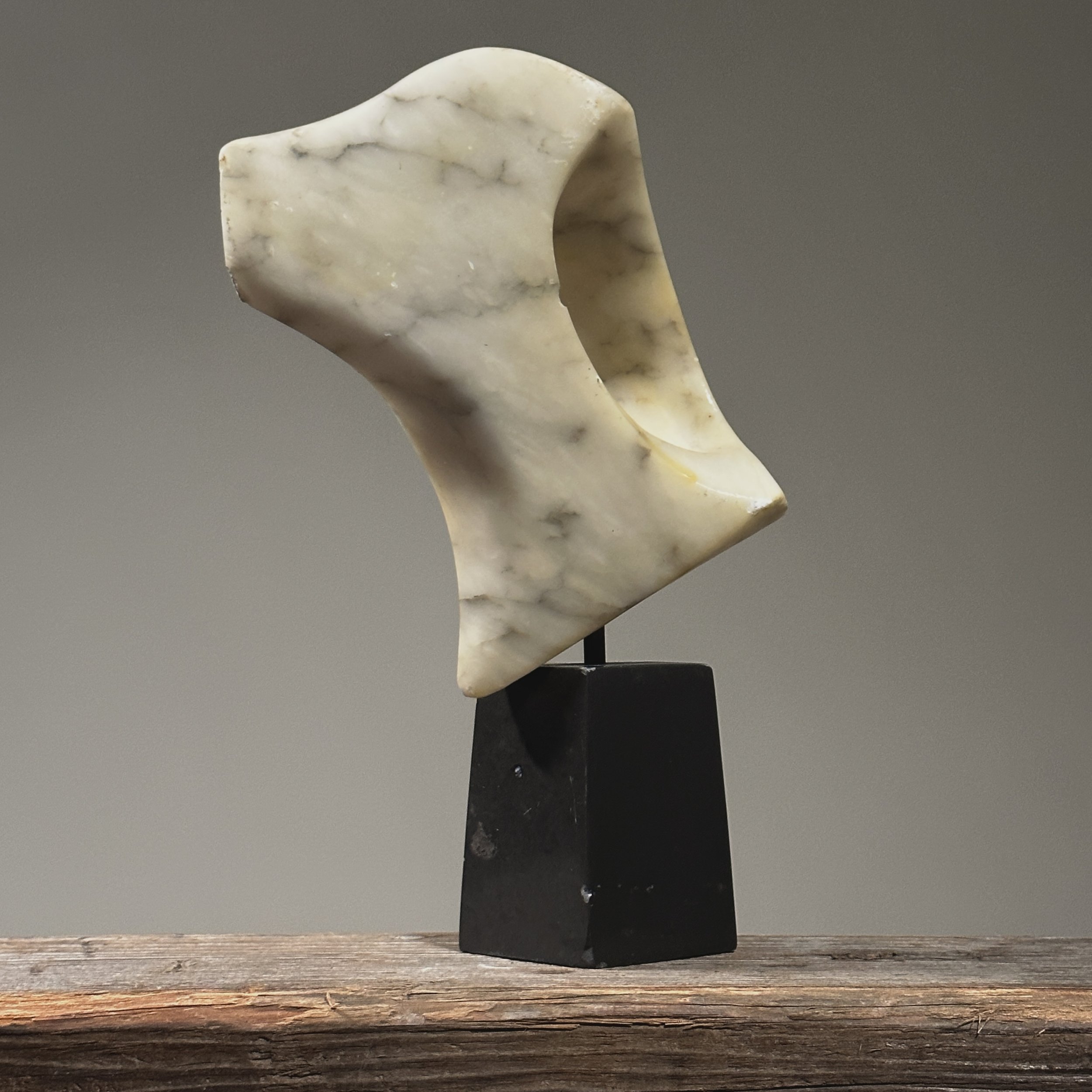Thomas Tjapaltjarri (Australian, b. 1964) - Untitled Aboriginal Dot Painting (Western Desert Style)
Thomas Tjapaltjarri (Australian, b. 1964) - Untitled Aboriginal Dot Painting (Western Desert Style). Western Desert Style dot painting by Thomas Tjapaltjarri. Acrylic on linen. In good condition with minor wear from age. Unsigned.
Size: 18.25”H x 24.5”W
Provenance
Robert Steele Gallery NY; Robert Steele operated Anima Gallery in Adelaide, Australia as well as his gallery in New York. He represented and exhibited many contemporary American and international artists and was one of the most prominent dealers in Aboriginal art.
Tjapaltjarri began painting in December 1987, a few years after settling at Kiwirrkurra. His cousin Warlimpirrnga had already made a name for himself as an artist and he encouraged Tjapaltjarri to paint too. Tjapaltjarri and Walala joined the Papunya Tula artists, and they and Warlimpirrnga eventually gained fame internationally as the Tjapaltjarri Brothers. Although he normally paints using Tjapaltjarri as a surname, Tjapaltjarri's skin name is Tjapangati.
His paintings depict stories from the Pintupi dreaming. They are mostly about places and events in the Tingari cycle (a cycle of myths about the ancestors of the Pintupi). His designs are inspired by those painted on the body during ceremonies. He uses acrylic paints on canvas, sticking to earthy colors (black, white and ochres). He paints simple shapes with dotted lines, which is a style that his brothers also use.
Thomas Tjapaltjarri (Australian, b. 1964) - Untitled Aboriginal Dot Painting (Western Desert Style). Western Desert Style dot painting by Thomas Tjapaltjarri. Acrylic on linen. In good condition with minor wear from age. Unsigned.
Size: 18.25”H x 24.5”W
Provenance
Robert Steele Gallery NY; Robert Steele operated Anima Gallery in Adelaide, Australia as well as his gallery in New York. He represented and exhibited many contemporary American and international artists and was one of the most prominent dealers in Aboriginal art.
Tjapaltjarri began painting in December 1987, a few years after settling at Kiwirrkurra. His cousin Warlimpirrnga had already made a name for himself as an artist and he encouraged Tjapaltjarri to paint too. Tjapaltjarri and Walala joined the Papunya Tula artists, and they and Warlimpirrnga eventually gained fame internationally as the Tjapaltjarri Brothers. Although he normally paints using Tjapaltjarri as a surname, Tjapaltjarri's skin name is Tjapangati.
His paintings depict stories from the Pintupi dreaming. They are mostly about places and events in the Tingari cycle (a cycle of myths about the ancestors of the Pintupi). His designs are inspired by those painted on the body during ceremonies. He uses acrylic paints on canvas, sticking to earthy colors (black, white and ochres). He paints simple shapes with dotted lines, which is a style that his brothers also use.
Thomas Tjapaltjarri (Australian, b. 1964) - Untitled Aboriginal Dot Painting (Western Desert Style). Western Desert Style dot painting by Thomas Tjapaltjarri. Acrylic on linen. In good condition with minor wear from age. Unsigned.
Size: 18.25”H x 24.5”W
Provenance
Robert Steele Gallery NY; Robert Steele operated Anima Gallery in Adelaide, Australia as well as his gallery in New York. He represented and exhibited many contemporary American and international artists and was one of the most prominent dealers in Aboriginal art.
Tjapaltjarri began painting in December 1987, a few years after settling at Kiwirrkurra. His cousin Warlimpirrnga had already made a name for himself as an artist and he encouraged Tjapaltjarri to paint too. Tjapaltjarri and Walala joined the Papunya Tula artists, and they and Warlimpirrnga eventually gained fame internationally as the Tjapaltjarri Brothers. Although he normally paints using Tjapaltjarri as a surname, Tjapaltjarri's skin name is Tjapangati.
His paintings depict stories from the Pintupi dreaming. They are mostly about places and events in the Tingari cycle (a cycle of myths about the ancestors of the Pintupi). His designs are inspired by those painted on the body during ceremonies. He uses acrylic paints on canvas, sticking to earthy colors (black, white and ochres). He paints simple shapes with dotted lines, which is a style that his brothers also use.




































